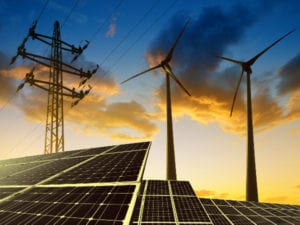As South Africans settle into the routine and inconvenience of load shedding and planning their activities around shifting electricity supply, it is businesses that are taking the biggest hit through the loss of operational capabilities, productivity, and profitability.
While individuals deal with maneuvering their household times and sitting in gridlock traffic, local businesses, hospitals, schools, and industrial sites must find ways to remain operational despite limited generating capacity.
The electricity shortfall makes it crucial for organisations to reconsider their power supply systems.
According to Nick Oosthuizen, Managing Director at Inframid and consultant in energy efficiency, there is no silver bullet to solving this challenge.
“Businesses need to take a holistic approach when looking at securing their power supply. There is no one-size-fits-all solution. A tailored system, based on a feasibility study that considers unique power supply elements for your organisation, will ensure the highest return on investment (ROI),” he advises.
According to Oosthuizen, there are at least five essential aspects to consider.
- Know your load
To ensure an optimal energy supply system, you
first need to understand what it is you are currently dealing with. It is
important to know your electrical demand, load content, and architecture. “Businesses
should conduct an electrical audit before considering other energy sources.
This will help avoid fruitless expenditure and help plan a low energy load. A
good place to start is by considering the energy efficiency of the load
elements,” says Oosthuizen.
“For instance, the Coefficient of performance
(COP) is the efficiency of refrigeration, aircon, and water heating systems and
is highly dependent on product quality. A higher COP equates to lower operating
costs, so businesses should continuously consider the technology they are using,
especially as part of maintenance replacement plans. The same considerations are
relevant to light fitting technologies.”
- Check your utility connection
“Although utility-supplied power is highly
unreliable at the moment, it is still the cheapest. As your main source of
energy, you should validate that you have utility connections at the most cost-effective
tariff scale. Acquiring and operating backup power can be rather expensive if
not part of an overall plan, and all energy-saving initiatives should be
considered.”
- Consider your backup options
Popular backup power solutions include diesel
generators, gas generators, and batteries. The chosen solution will largely
depend on cost and usage requirements. “While backup power reduces your dependence on
utility power – a feature in high demand at the moment – it comes at a price.
Electrical teams need to motivate this investment to the decision-makers, and
the best way to do this is through a financial feasibility study that weighs up
all elements of power supply in relation to each other and the prevention of downtime,”
says Oosthuizen.
According to Oosthuizen, downtime can get very
costly and should be measured when looking at the feasibility of a backup power
solution. This also bears weight on the kind of backup power you decide to use
and when it will kick in. “This varies between industries and applications. For
example, one minute of downtime before backup power kicks in might be too much
for certain manufacturing plant.” He advises that organisations should do a
breakdown of electrical loads and establish the normal
load, the backup load, and the essential load.
The Essential load is where you can’t lose a second and a seamless
transfer will be needed.
- Think about seamless transfer
“For organisations who can’t afford a lapse in
power supply, a seamless transfer system will be necessary. However, this
seamless transfer might not be needed for all loads in the facility. The
essential load would be the priority, and would need an uninterruptible power supply (UPS) for mission-critical
systems. However, being an expensive commodity, it is important to apply UPS to
essential loads only and after determining its feasibility.”
- Save energy where you can
Reducing your energy requirements is an
obvious strategy when it comes to improving your security of supply and
reducing costs. “When it comes to saving energy, it is not just about the
energy-efficiency of the technology you use. Supplementary power sources are
something worth considering. Renewable energy generation in the form of solar,
wind and other states of the art generation can be implemented. This has the
potential to convert your load into a valuable asset,” advises Oosthuizen.
He says: “One of the biggest mistakes we see
is that organisations focus on the glaring symptoms of power cuts and try to
heal these with specific power supply elements, without following a holistic
approach. They overlook the bigger picture. Different industries have unique
load structures serving specific operational needs, each needing different combinations
of power supply elements. Each of these elements addresses a very specific area
of energy efficiency, such as security of supply, protecting essential loads,
saving energy, and avoiding expensive upgrades.”
“An independent energy procurement process
should be conducted to provide appropriate and competitive solutions, where tender
documentation based on international standards is sent out to various suppliers
of different power supply-, seamless transfer- and renewable energy sources to
tender. This process will also increase the overall feasibility.”
Oosthuizen advises that a good energy strategy
is to utilise utility power augmented by other feasible energy elements and to shift
loads to minimise energy usage. “A good energy efficiency strategy is a
worthwhile investment as it helps companies to avoid costly downtime and saves
energy usage, thus improving the return on the investment made,” concludes
Oosthuizen.








